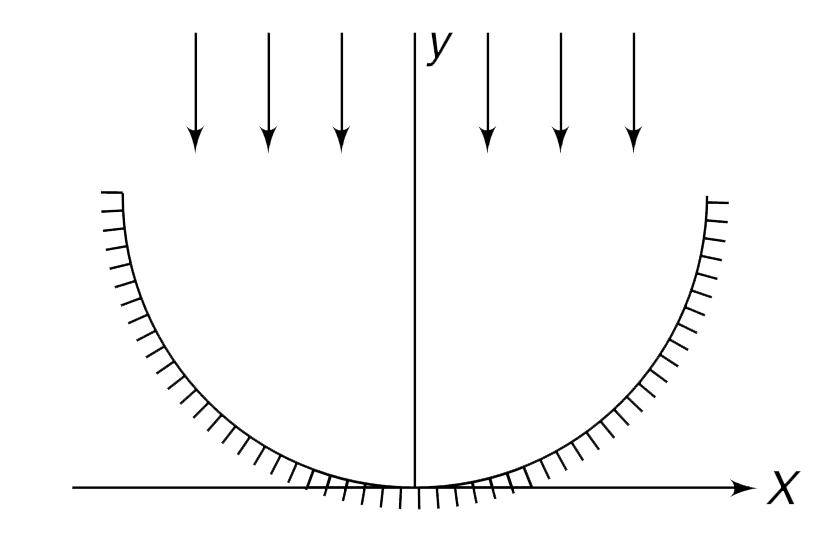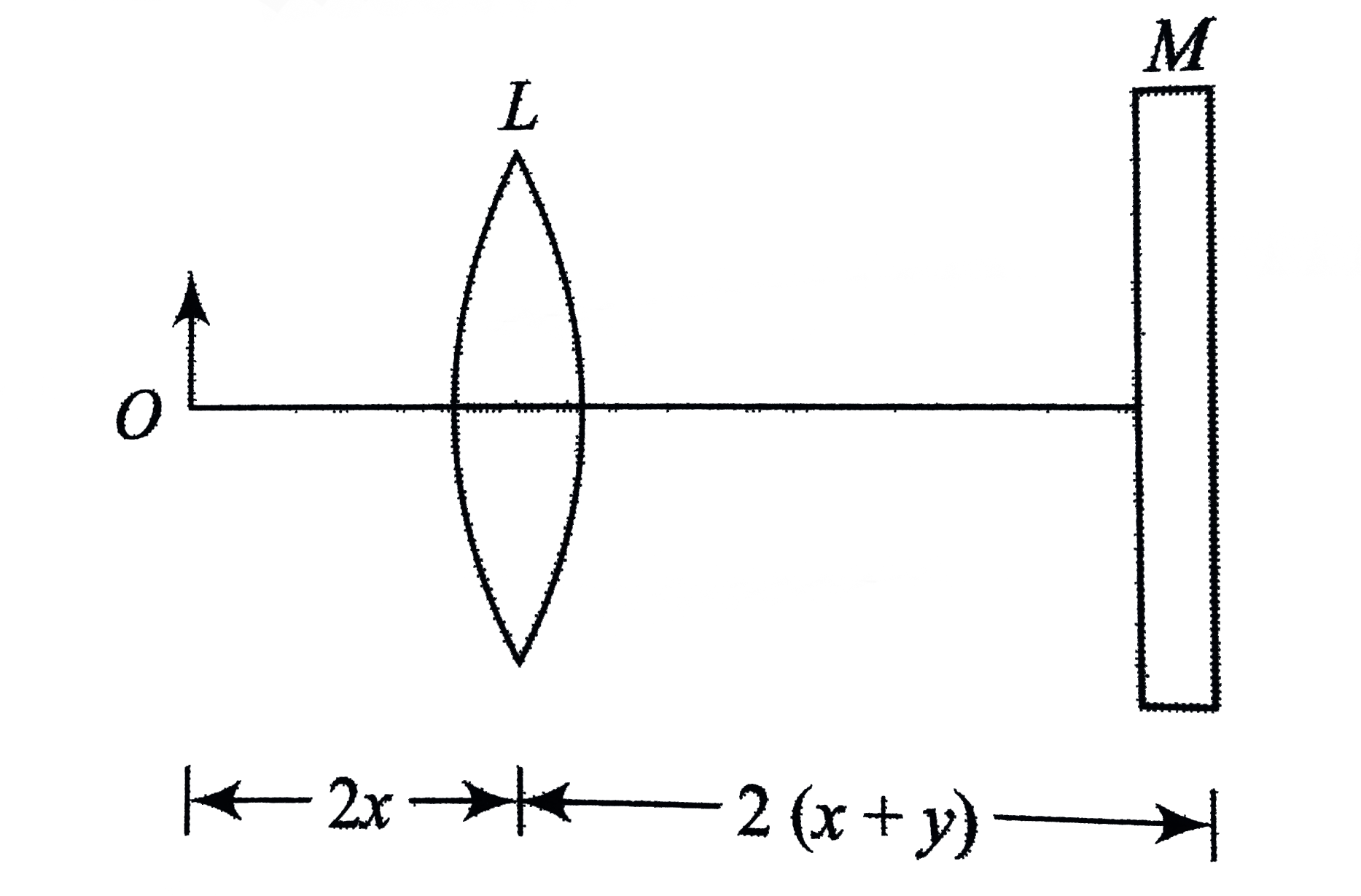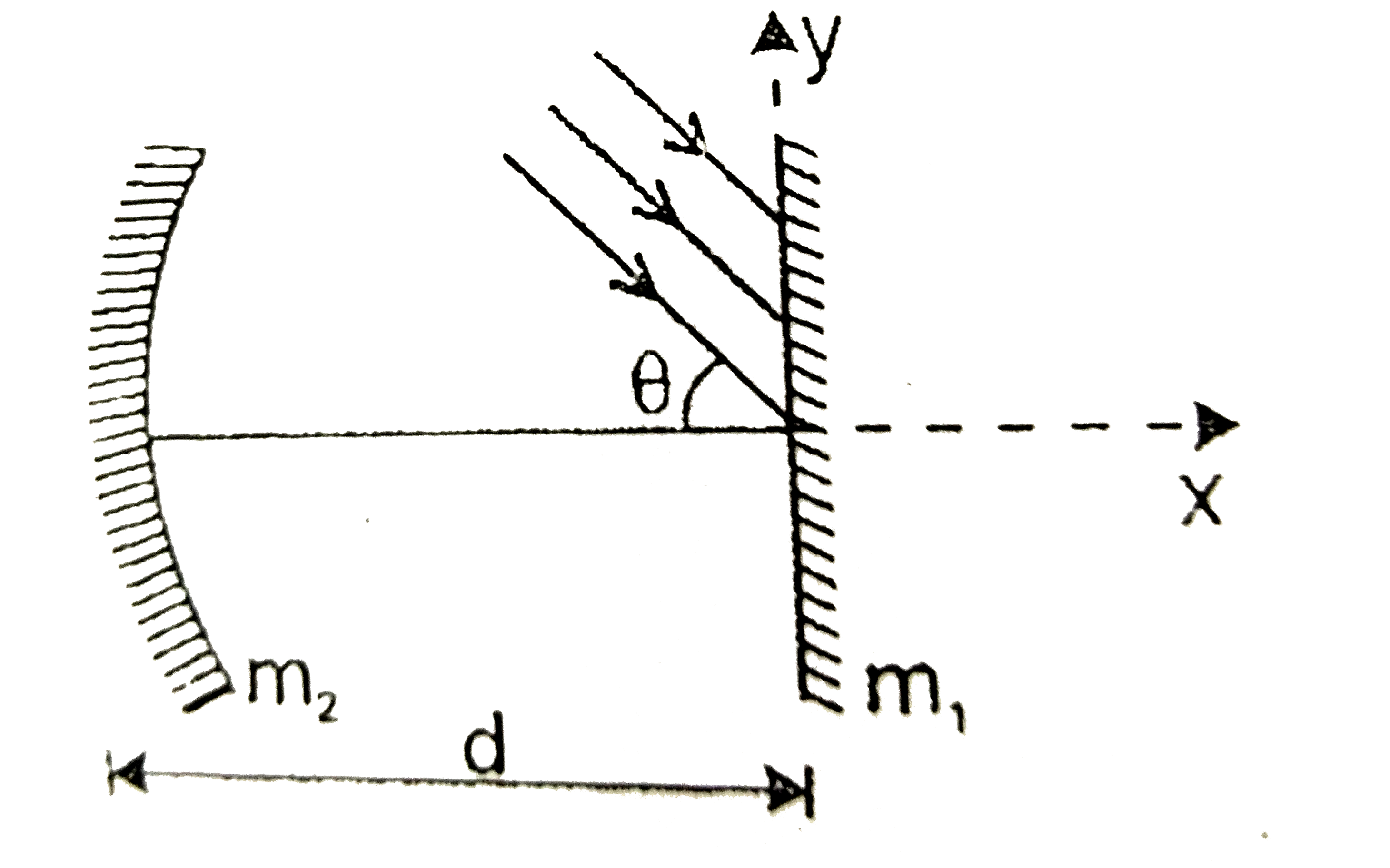Consider a large parabolic mirror whose section can be represented by y=kx2, where k is a positive number. Show that a parallel beam of light travelling in negative y direction, after reflection from the mirror, gets focused at a point (0,14k) . If you need a parallel beam of light, will you prefer a parabolic reflector over a spherical one?

Step by step video & image solution for Consider a large parabolic mirror whose section can be represented by y = kx^(2), where k is a positive number. Show that a parallel beam of light travelling in negative y direction, after reflection from the mirror, gets focused at a point ( 0, (1)/(4k)) . If you need a parallel beam of light, will you prefer a parabolic reflector over a spherical one? by Physics experts to help you in doubts & scoring excellent marks in Class 12 exams.
Updated on:21/07/2023Topper's Solved these Questions
- GEOMETRICAL OPTICSBOOK - ARIHANTCHAPTER - GEOMETRICAL OPTICSEXERCISE - Level 3
9 Videos
- GEOMETRICAL OPTICSBOOK - ARIHANTCHAPTER - GEOMETRICAL OPTICSEXERCISE - Level 3
9 Videos
- ELECTROSTATICSBOOK - ARIHANTCHAPTER - ELECTROSTATICSEXERCISE - Level 3
59 Videos
- MAGNETIC EFFECT OF CURRENTBOOK - ARIHANTCHAPTER - MAGNETIC EFFECT OF CURRENTEXERCISE - Magnetic effect of Current
45 Videos
Similar Questions
The light rays emanating from a point source situated at origin when reflected from the mirror ofa search light are reflected as beam parallel to the x-axis. Show that the surface is parabolic, by first forming the differential equation and then solving it.
View SolutionL is a lens such that a parallel beam of light I ncident on it, after refraction, converges to a point at a distance x from it and M is a mirror such that a parallel lbeam of light incident on it, after reflection, converges to a point at a distance y from it. Now the lens L and mirror M are placed at a distan 2(x+y) from each other. An object of size 2 cm is kept infront of lens at a distance 2x from it. Find the nature, position , and size of the image that willl be seen by an observer looking toward the mirror through the lens.

View Solution
Knowledge Check
A ray of light moving parallel to the x-axis gets reflected from parabolic mirror whose equation is (y−3)2=8(x+2). After reflection, the ray must pass through
A(0, 3)B(3, 0)C(0, 0)Dnone of theseA ray of light moving parallel to the X-axis gets reflected from a parabolic mirror whose equation is (y−2)2=4(x+1) . After reflection , the ray must pass through the point
A(-2,0)B(-1,2)C(0,2)D(2,0)A ray of light moving parallel to x-axis gets reflected from a parabolic mirror whose equation is 4(x+y)−y2=0 . After reflection the ray pass through the pt(a,b). Then the value of a + b is
A2B1C-2D-1
Consider a curved mirror y = f(x) passing through (8, 6) having the property that all light rays emerging from origin, after getting reflected from the mirror becomes parallel to x-axis. Find the equation of curve.
View SolutionConsider the curved mirror y=f(x) passing through (0,6) having the property that all light rays emerging from origin, after getting reflected from the mirror becomes parallel to x-axis, then the equation of curve, is
View SolutionA mirror in the first quadrant is in the shape of a hyperbola whose equation is xy=1. A light source in the second quadrant emits a beam of light that the hits the mirror at the point (2,1/2). If the reflected ray is parallel to the y-axis , the slope of the incident beam is
View SolutionConsider a curved mirror y = f(x) passing through (8, 6) having the property that all light rays emerging from origin, after reflected from the mirror becomes parallel to x-axis. The equation of the mirror is ya=b(c−xd) where a, b, c, d are constants, then
View SolutionIn the figure shown a thin parallel beam of light is incident on a plane mirror m1 at small angle 'θ' . m2 is a concave mirror of focal length 'f' . After three successive reflefctions of this beam the x and y coordinates of the image is

View Solution
